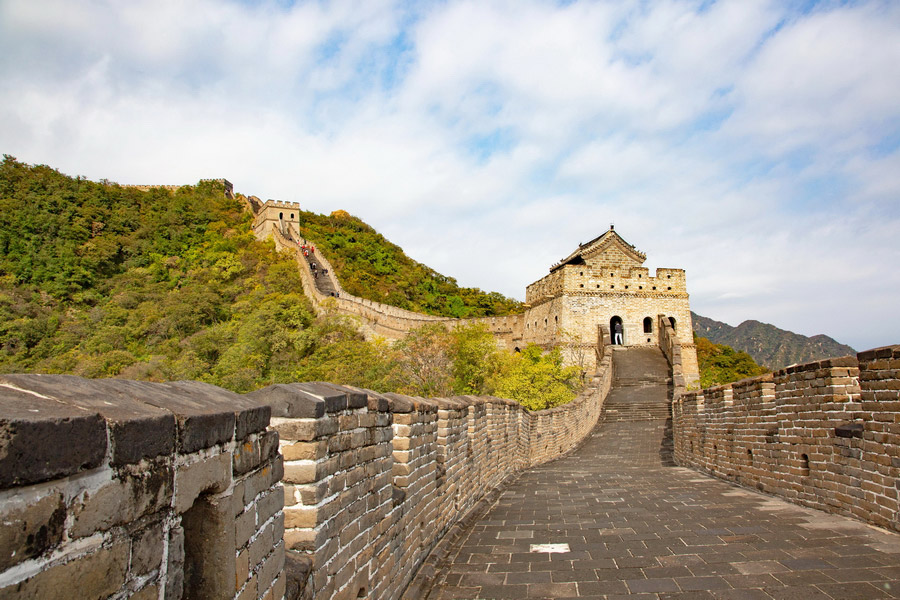
The Mutianyu (慕田峪长城) section of the Great Wall of China, situated 70 kilometres (about 43.5 miles) northeast of Beijing in Mutianyu Village, Huairou District, is celebrated for its scenic beauty, remarkably preserved stonework, and a calmer ambiance than the busy Badaling area. Distinguished by its formidable watchtowers, lofty crenellated walls, and thick woodlands—particularly enchanting in autumn—Mutianyu offers a striking experience. Its well-developed tourist infrastructure ensures a comfortable visit for all kinds of travellers, including families with children.
This guide to the Great Wall of China will help you plan your trip to the Mutianyu section, offering insights into its highlights and helping you prepare in advance.
Location: 70 kilometres from Beijing, adjoining the rugged Jiankou Wall to the west
Total length: 2,250 metres
Total number of towers: 23
Section open to visitors: 20 towers
Opening hours:
Low season (November 16 to March 15)
Weekdays: 8.00 a.m. To 5.30 p.m. Last admission: 4.30 p.m.
High season (March 16 to November 15)
Weekdays: 7:30 a.m. to 6:00 p.m. Last admission: 3 p.m.
Weekends: 7:30 a.m. to 6:30 p.m.
Mutianyu Great Wall Tours
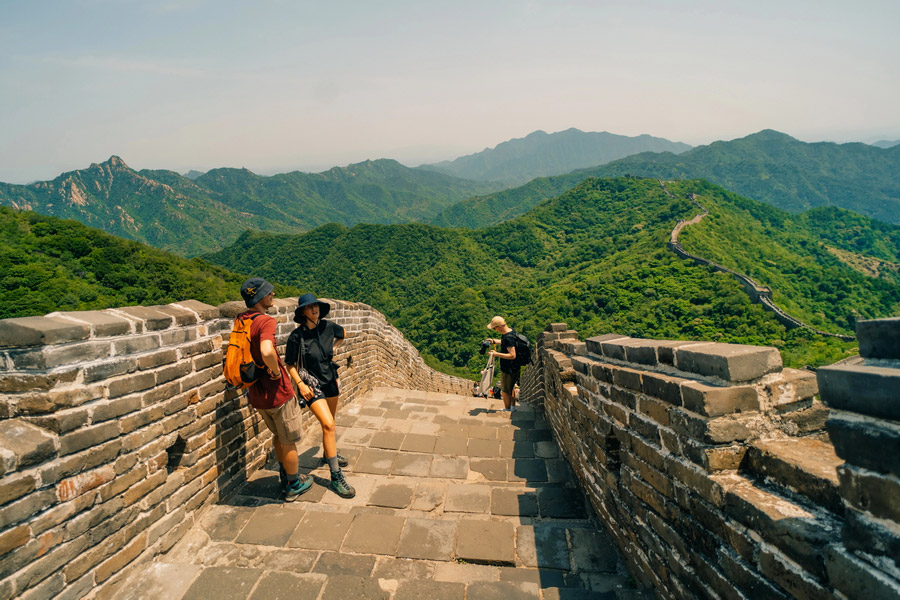
Advantour offers one-day tours to the Mutianyu section of the Great Wall of China as part of an 8-day journey through China.
The 8-day China Small Group Tour (from Shanghai) covers the highlights of Shanghai and Xi'an, includes a charming visit to Zhujiajiao—often called the “Venice of the East”—and features guided tours of Beijing’s major historical sites, including the Mutianyu section of the Great Wall. This itinerary blends a rich program of excursions with a comfortable travel pace, so you can thoroughly appreciate Chinese culture without feeling hurried or overloaded.
If you’d like to explore another famous section of the Great Wall of China, such as Badaling, consider these China travel packages:
Best Time to Visit Mutianyu Great Wall
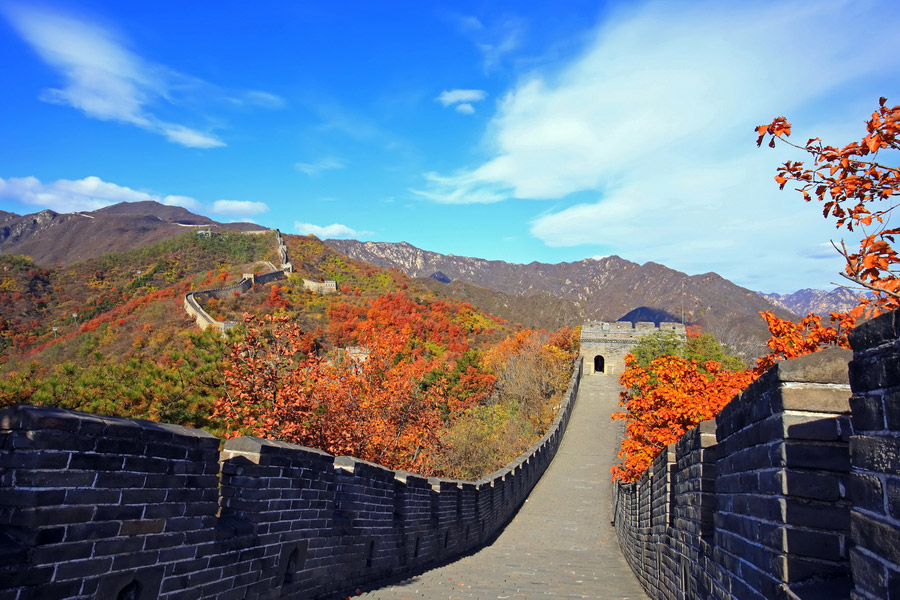
The best time to visit the Mutianyu Great Wall is in spring (April-May) and autumn (September-October). During these times, the weather is especially pleasant: temperatures are comfortable, rainfall is low, and the landscapes come alive with striking colours.
If you want to avoid large crowds, it’s wise to plan your trip for a weekday morning. On weekends and holidays—particularly during early October’s Golden Week—the number of visitors rises sharply, which can make moving around more challenging and affect your overall experience.
However, travellers who wish to enjoy the lively atmosphere of a major local celebration might consider visiting Mutianyu during one of China’s national festivals. Notable events include:
- Chinese New Year (January or February)
- Great Wall Red Leaves Festival (October and early November)
- Dragon Dance at the Great Wall (January or February)
- Summer Resort Festival (June to August)
- International Mountaineering Festival (September)
- Great Wall Apricot Festival (March and April)
History of the Mutianyu Great Wall
The Mutianyu section of the Great Wall of China has a rich history that dates back to the Northern Qi Dynasty (550-577), when the first defensive structures were built in this area. However, the wall as we see it today was constructed much later, during the Ming Dynasty (1368-1644). Major building work began in the late 14th century, aimed at strengthening China's northern frontier and enhancing the security of the region.
Mutianyu was part of a strategic defence network safeguarding the approaches to Beijing. This stretch is distinguished by its massive stone walls, up to 7 metres /22.96 feet) wide and 5 to 6 metres (16.40 to 19.68 feet) high, and by the unusually high concentration of watchtowers, positioned every 100 to 200 metres (328 to 656 feer). Construction was overseen by General Xu Da, one of the closest allies of Zhu Yuanzhang, the founder of the Ming Dynasty.
After the Ming Dynasty fell, Mutianyu—like other parts of the Great Wall—gradually lost its military role. Restoration began in the 20th century, and by the 1980s, Mutianyu was officially opened to visitors.
Things to Do at the Mutianyu Great Wall
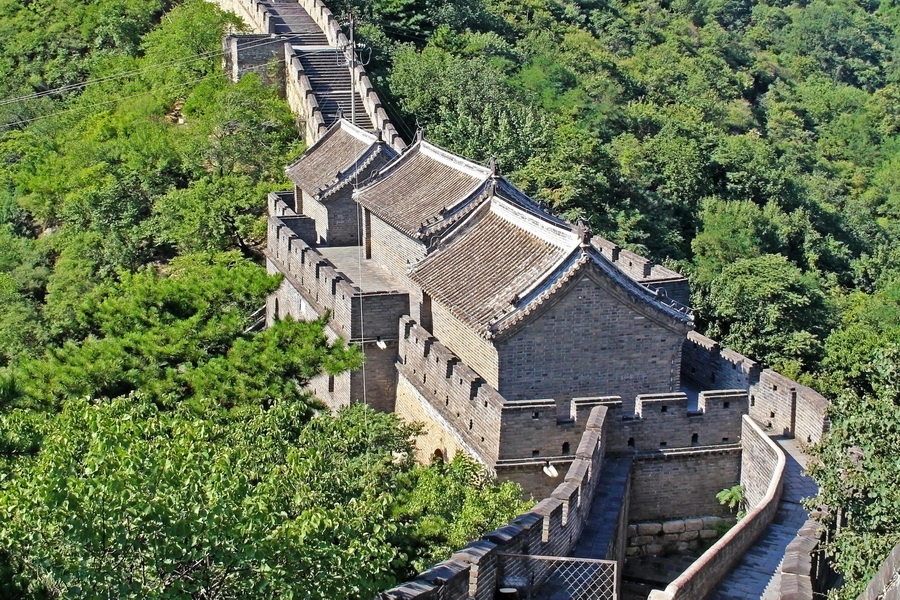
Places to Visit at the Mutianyu Great Wall
Places to visit at Mutianyu include not only remarkable architectural features of the Great Wall of China itself but also natural and cultural attractions nearby.
The Zhengguan Terrace is a striking platform with three watchtowers set side by side: one large central tower flanked by two smaller ones. These towers are combined into a single architectural ensemble, featuring two tiers, internal passageways, and rooms once used by guards. It is the only complex of three towers on a shared platform anywhere along the Great Wall, making it a true architectural rarity. You’ll find it marked as Watchtower No. 4 on maps, in the eastern part of the Mutianyu section.
The Heavenly Ladder is a steep staircase between watchtowers No. 19 and No. 20, it is regarded as one of the most challenging section of the entire Mutianyu route, featuring a total of 460 steps. Few visitors attempt this almost vertical climb, which demands strong physical fitness and trekking poles for support. Those who do reach Tower No. 20 are rewarded with breathtaking views and a sweeping 360-degree panorama.
To reach the Heavenly Ladder, visitors can begin their adventure by ascending the 1,000 steps from the base of the Great Wall, covering approximately 7 kilometres. This trek takes you through 11 watchtowers before you tackle the challenging Heavenly Ladder. After soaking in the incredible views from the top, you can descend by retracing your steps. For your descent, you can follow the 1,000 steps back down, take a cable car, or enjoy a thrilling ride on a toboggan.
The China Dream Stone City Museum (中华梦石城) houses China’s largest collection of natural karst formations, including striking stalactites and stalagmites, as well as stones with unique shapes, textures, and colours that captivate visitors. The museum halls are enhanced with colourful lighting, gentle water sounds, and light meditative music, creating a tranquil atmosphere.
Location: Right Uphill Road (on the way to Watchtower No. 6)
Opening hours: 8:00 a.m. to 4:30 p.m.
Mutianyu Village, situated at the base of the Great Wall and just a short walk from the entrance, boasts a peaceful and traditional atmosphere. Surrounded by lush vegetation, including ancient trees, the village features numerous guesthouses and rustic restaurants where you can sample popular local specialities. Staying in Mutianyu village offers a unique opportunity to immerse yourself in Chinese culture.
Mutianyu Great Wall Hotel (慕田峪长城酒店), nestled within the iconic Great Wall, offers a unique and charming stay that allows guests to sleep and wake up surrounded by breathtaking landscapes. The serene environment provides a peaceful retreat, evoking the atmosphere that Chinese soldiers once experienced in the past. Isolated from the hustle and bustle of city life, the hotel features 59 well-appointed guest rooms in various styles, an outdoor garden, and extensive Wi-Fi coverage. Guests can also indulge in authentic local specialities, delicately prepared to warm the heart and delight the palate, making this stay truly unforgettable.
Entertainment, Parks, and Shopping at the Mutianyu Great Wall
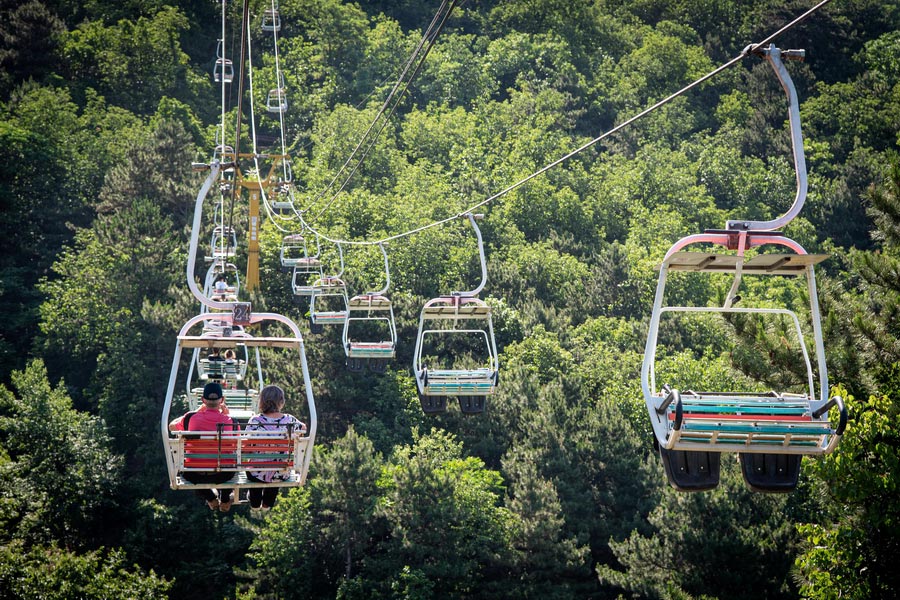
Entertainment at Mutianyu
Thanks to modern infrastructure, getting up and down the Mutianyu section of the Great Wall of China is an adventure all its own. A cable car, chairlift, and bobsled track make the journey not only convenient but also genuinely exciting.
The cable car offers a comfortable and scenic way to reach the central part of the wall, near Watchtower No. 14. Its enclosed cabins suit visitors of all ages and are especially welcome on hot or rainy days. As you ascend, breathtaking panoramas unfold, with the wall weaving across the hillsides before disappearing into forests and distant mountains.
- Suitable for: all ages
- Upper station: near Tower No. 14
- Ride time: approximately 8 minutes
- Cabin type: enclosed
- Tickets: sold separately (one way or round trip)
The chairlift provides an open-air alternative for those who want to feel the breeze. Two-seater chairs rise slowly above the ground, constantly shifting your perspective on the surrounding landscape. Along the way, you can glimpse the wall itself, remote watchtowers, and rooftops of old village houses in the valley below. The gentle rocking and leisurely pace let you enjoy each moment.
- Upper station: by Tower No. 6
- Ride time: about 10 minutes
- Cabin type: open chairs for two
- Tickets: sold separately (one way or round trip)
The bobsleigh (also known as the toboggan) is one of the most surprising attractions at Mutianyu. After exploring the wall on foot, visitors can hop onto individual sleds and coast down a long, winding metal track. This ride is especially popular with families and anyone looking to finish their visit with a playful, memorable twist.
Route: descends from Tower No. 6 to the chairlift’s lower station
Track length: around 1,580 metres
Tickets: purchased separately
Night Tours in Mutianyu
During the summer school holidays (from June 27 to August 31), National Day celebrations (October 1-7), and the May Day holiday (May 1-5), Mutianyu offers a special experience: night tours. On these evenings, travellers can see the Great Wall of China bathed in dramatic lighting that makes the fortifications look even more imposing and mysterious. As night falls, a walk along the illuminated wall takes on an almost otherworldly feel. These tours also feature live music and dance performances that add a festive, theatrical touch.
Opening Hours: 5:30 p.m. to 9:00 p.m.
Last Entry: 8:30 p.m.
Lighting Time: 6:00 p.m. to 9:00 p.m. (adjusted according to sunset)
Live Performances
Friday & Saturday: 6:00 p.m. to 8:00 p.m.
Sunday – Thursday: 7:00 p.m. to 8:00 p.m.
Tickets can also be booked on the official WeChat account of the Mutianyu Great Wall.
Parks of Mutianyu Great Wall
The parks around Mutianyu beautifully complement the Great Wall of China. The mountain slopes here are blanketed with dense coniferous and deciduous forests, forming a stunning backdrop for this ancient marvel. Trails of varying difficulty levels and well-maintained facilities make it easy to explore the historical and cultural sites scattered near the wall.
The Mutianyu Great Wall lush forest stretches across the area surrounding the wall and is regarded as one of the main nature reserves in the region. Over 90% of the park is covered by thick forests. In spring, apricot and cherry trees burst into bloom; in summer, the landscape is lush and green; and in autumn, the mountains are set ablaze with vivid red and golden hues.
About 15 km from Mutianyu lies the Hongluo Temple Scenic Area. This is more than a national park—it’s a natural and cultural haven featuring a Buddhist temple complex, the serene Five Hundred Arhats Garden, nearby forests, hiking trails, and a pond. A funicular railway carries visitors to a viewing platform with sweeping views of the surrounding mountains.
The Beijing Cliffside Carvings Natural Scenic Area borders directly on the Mutianyu section. This remarkable park combines natural beauty with historical significance, showcasing intricate stone carvings dating back to the Tang Dynasty (7th-10th centuries AD). Nestled in a picturesque landscape, it is also a popular spot for hiking. Visiting this section is suitable only for experienced and well-prepared travelers.
Shopping at the Mutianyu Great Wall
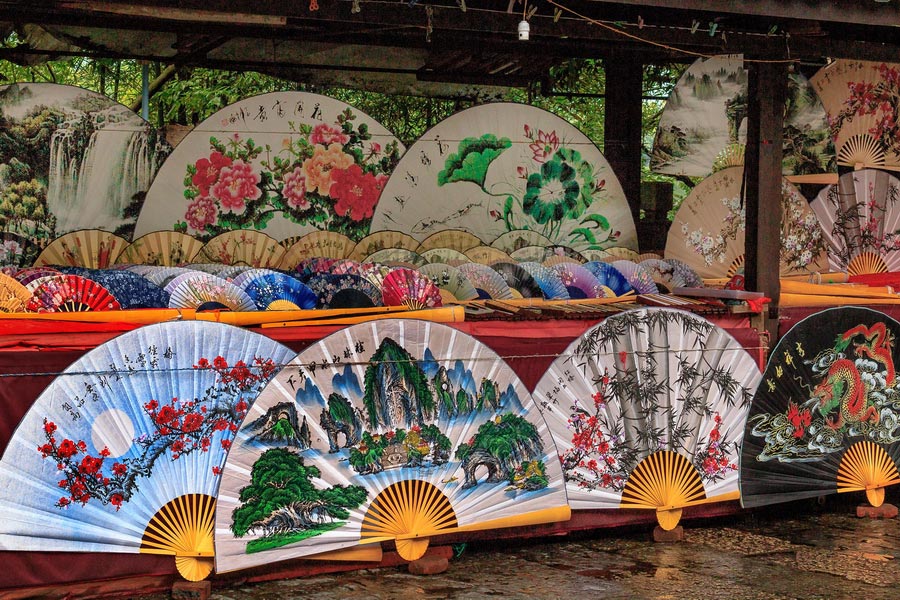
Shopping in Mutianyu is a pleasant way to round off a walk along the Great Wall of China. Souvenir shops near the entrance and at the cable car station offer a wide variety of keepsakes.
Decorative Plates
Painted plates featuring scenes of the Great Wall of China are among the most striking souvenirs you can take home. Popular designs include views of the Mutianyu terraces, mountain landscapes, and elegant Chinese calligraphy. Many are finished in traditional styles with gold accents and vibrant colours, and often come with a stand or gift box.
Fans
Classic Chinese fans bearing images of the wall are both useful and decorative. In Mutianyu, you’ll find paper and fabric fans adorned with hand-painted or printed illustrations of the wall winding across ridges, sweeping panoramas, and detailed watchtowers.
Silk Products
Silk scarves, shawls, and small decorative fabrics with themed designs are another favorite souvenir. They might portray scenes from the Great Wall, traditional Chinese landscapes, or motifs inspired by the Ming dynasty. Silk remains a powerful symbol of China, recalling the days when the Silk Road began in this northern region.
The Mutianyu Great Wall Cultural and Creative Store offers the opportunity to find unusual, high-quality items that combine culture, innovation, and practicality.
Food at the Mutianyu Great Wall
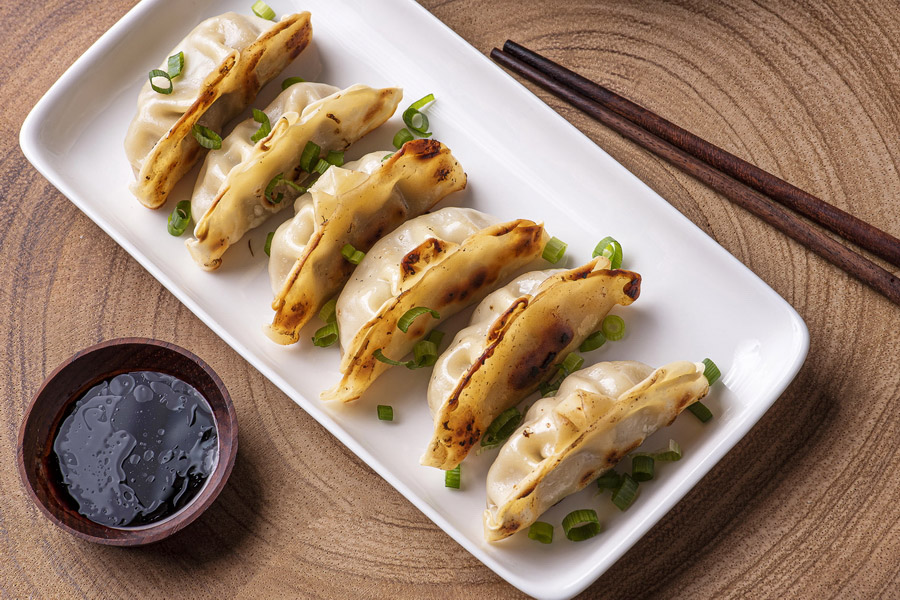
Food in Mutianyu is a colourful and memorable part of the trip, with a range of local dishes and hearty snacks that add to the experience of visiting the Great Wall of China.
Popular Dishes
Fried noodles and rice with vegetables or meat
A simple, filling option available at most cafes. Noodles are often served with egg, pork, or chicken.
Steamed buns with filling (baozi)
Traditional Chinese steamed buns filled with meat, vegetables, or sweet bean paste are a favorite snack, especially popular in the mornings.
Fried dumplings (jiaozi, 饺子)
One of the best-known Chinese street foods—crispy on the outside and juicy inside. Fillings range from pork and cabbage to mushrooms and tofu.
Chinese-style skewers (shao kao, 烧烤)
Meat, vegetables, or mushrooms grilled on skewers with spices. A street food staple, often found in the shopping arcades near the entrance.
Steamed corn and sweet potatoes
A wholesome snack, especially popular in autumn and winter, sold hot from local street stalls.
Noodle soup
A warming bowl of chicken or beef broth with noodles, herbs, and spices. Ideal for cooler days.
Tips: Keep in mind that local dishes may be richer, saltier, or spicier than you might be used to. Around lunchtime (12:00 to 14:00), restaurants can be quite busy, so it’s wise to plan meals a bit earlier or later, especially on weekends and holidays.
Restaurants in the Mutianyu Area
Mutianyu Great Wall Wing Chung House Restaurant
A traditional Chinese restaurant with a cozy atmosphere and a good selection of home-style dishes. It serves stir-fried vegetables, noodles, meats in sauce, and seasonal plates featuring local ingredients.
North Gala Hot Pot
A spot dedicated to classic Chinese hot pot. Guests pick their own meats, vegetables, and seafood to cook at the table in either spicy or mild broth. Ideal for a relaxed meal with family or friends.
Xianlaoman
This northern Chinese restaurant focuses on traditional appetisers, steamed buns, dumplings, and meat dishes. The setting is straightforward, service is quick, and it’s a good choice for trying classic Beijing fare close to the tourist area.
Routes of the Mutianyu Great Wall
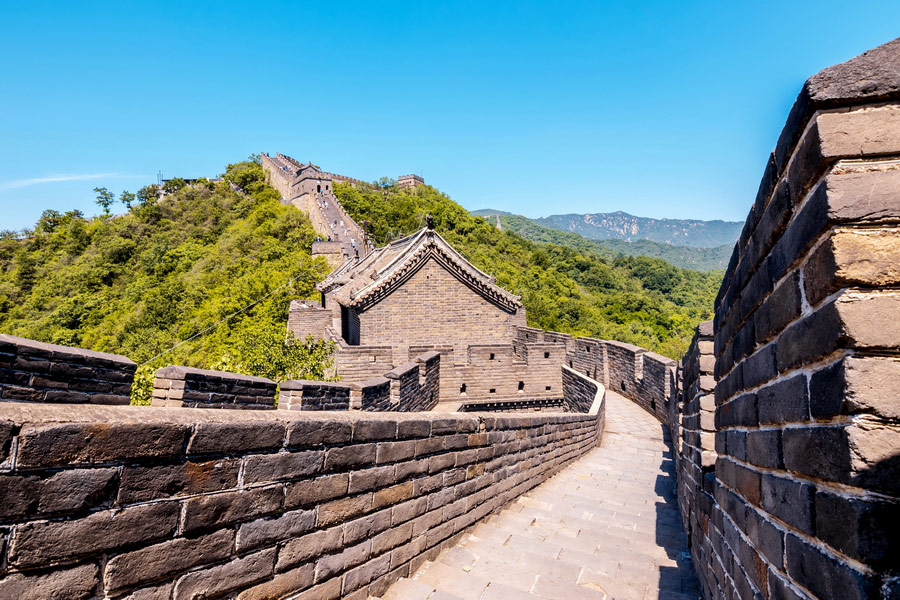
The routes at the Mutianyu Great Wall let visitors tailor their walk according to their time, fitness level, and interest in different sections of the wall. The area open to tourists runs from Tower No. 1 at the eastern end to Tower No. 20 at the western edge, and completing the full stretch in both directions takes around four hours.
Entry points to the Mutianyu section are found at these towers:
- Tower No. 6—reachable on foot or by chairlift
- Tower No. 8—accessible on foot
- Tower No. 12—accessible on foot
- Tower No. 14—served by the cable car
Since many visitors prefer taking the cable car or chairlift up rather than walking, the Mutianyu Great Wall routes are generally divided into three main sections:
Eastern Route from the South Entrance
From Tower No. 6 to Tower No. 1 and back
- Takes about 1.5 hours round trip
- A relatively easy walk with moderate climbs, ideal for families with children or anyone wanting to avoid steep sections.
Central Route from the North Entrance
From Tower No. 6 to Tower No. 14 (or the reverse) and back
- Takes roughly 2 hours both ways
- The most popular option, offering a balanced level of difficulty, stunning panoramic views, and convenient access via chairlift or cable car.
Western Route from the North Entrance
From Tower No. 14 to Tower No. 20 and back
- Takes about 1.5 hours round trip
- The steepest and most challenging section, with sharp climbs and high steps, but fewer crowds and expansive mountain vistas.
Transport at Mutianyu Great Wall
Transport options at the Mutianyu Great Wall include a cable car, chairlift, bobsleigh track (also called the Slideway or Toboggan, with more details available in our entertainment section), and internal shuttle buses. These make it easier to shorten the climb, skip steep sections, and enjoy your visit even more.
Shuttle Buses
After parking and purchasing your admission ticket, you can take the official shuttle bus to reach the lower stations of the lifts or the walking entrances to the wall.
- Travel time: about 5 to 7 minutes
- Frequency: every 5 or 10 minutes
- Tickets: purchased separately
If you plan to go up the Great Wall of China by cable car and come down by chairlift or toboggan, remember these are operated by different companies. Tickets are sold separately, so you’ll need to buy two one-way tickets: one for the ascent and one for the descent. If you choose the same transport both ways—such as taking the cable car up and down—you can purchase a round-trip ticket from a single operator.
How to Get to the Mutianyu Great Wall?
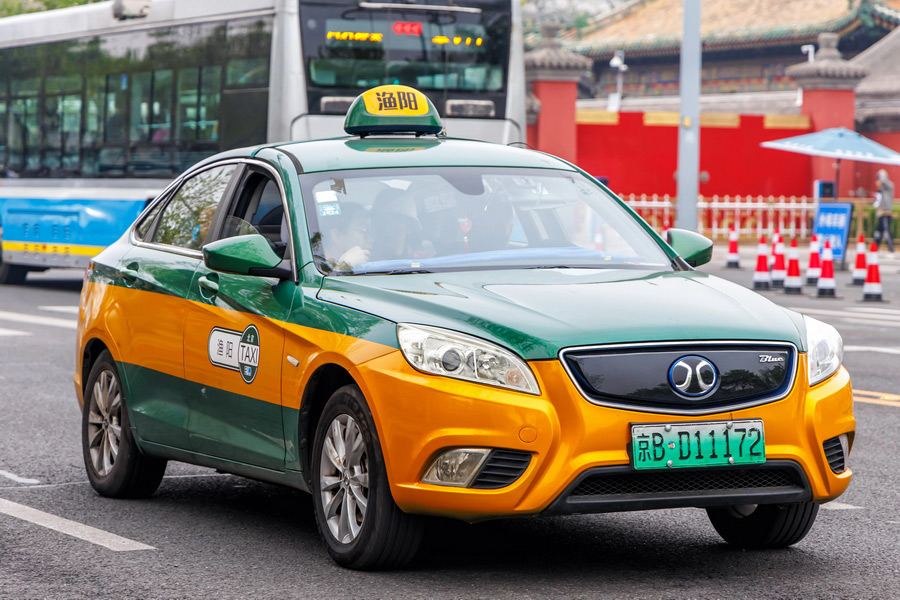
The question “How to get to Mutianyu?” is especially common among travellers planning an independent trip. Here are the main ways to reach the Mutianyu section of the Great Wall of China.
Direct Shuttle Buses
Mubus tourist bus from Dongzhimen Station is one of the simplest and most comfortable options.
- Departure point: north side of Dongzhimen Wai Bus Terminal, near Dongzhimen subway station (exit B1)
- Departure time: between 8:00 and 10:00 a.m.
- Arrival: direct drop-off at the Mutianyu parking lot
- Advantages: comfortable buses with no transfers
- Booking: via the official website or the Mu Bus WeChat account
After arriving, there’s a short roundabout ride (departing every 30-60 minutes, and lasts for about 30-40 minutes), followed by a 10-15 minute walk to the entrance.
- Total travel time: approximately 2.5 to 3 hours
Tips: avoid weekends and peak seasons if possible, watch stops closely, and consider downloading an offline map ahead of time.
Other bus options include:
Bus 916 to Mutianyu
Bus 867 to Mutianyu
Train
Since there is no direct train from downtown Beijing to Mutianyu, travellers can take a train from Beijing North Railway Station to Huairou North Station. From there, it is easy to take a taxi or catch a bus to the Mutianyu Great Wall Scenic Area. The train journey takes about 1.5 hours.
Taxi or Private Transfer
Hiring a taxi or arranging a private transfer is the fastest and most convenient way, especially for families with children.
- Travel time: approximately 1.5 to 2 hours each way
- Advantages: direct, no transfers, and fully comfortable
- Booking: through your hotel, the DiDi app, or a local travel agency
Is English Spoken at the Mutianyu Great Wall?
The main language spoken in the Mutianyu tourist area is Putonghua, the official language of China. However, staff at ticket offices, visitor centres, and souvenir shops generally speak basic English. This is usually enough to help with questions about routes, buying tickets, ordering meals, or shopping. While communication often stays within standard phrases, it’s typically sufficient for most travellers’ needs.
For visitors who prefer more detailed explanations in their own language, tours in English, Russian, French, Spanish, or Arabic are available. These should be booked in advance through licensed travel agencies. You’ll also find that navigation maps, information boards, and signs throughout the Mutianyu section of the Great Wall include English translations.
Mutianyu Great Wall: Currency, Prices, and Payment Tips
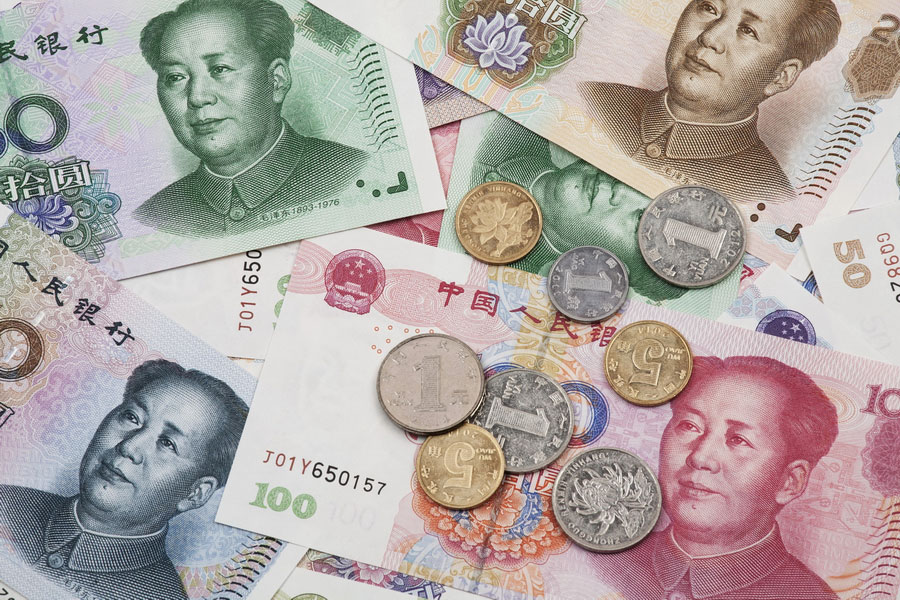
Currency and Cash Preparation
All payments at the Mutianyu Great Wall are made in Chinese yuan (CNY/RMB). Since there are no currency exchange offices or bank branches inside the tourist area, it’s best to prepare sufficient cash before heading to the wall. The most convenient places to exchange money are international airports, bank branches in central Beijing, or major transport hubs like Beijing Railway Station and Beijing Chaoyang.
Cashless Payment
Many shops, cafés, and ticket counters in the Mutianyu area accept Chinese digital payment systems such as Alipay (支付宝) and WeChat Pay (微信支付). Foreign visitors can link their international bank cards to these apps, but it’s wise to check in advance that your card is connected properly and the payment features are activated.
Prices for Entrance Tickets and Internal Transport
(Lower price ranges apply to foreign visitors aged over 6 up to and including 18 years.)
- Entrance ticket: 20 to 40 CNY/RMB (approximately $2.78 to $5.57, £2.08 to £4.16, €2.40 to €4.80).
- Entrance + Shuttle bus (round trip): 35 to 55 CNY/RMB (approximately $4.87 to $7.65, £3.64 to £5.72, €4.20 to €6.60).
- Entrance + Cable car/Chairlift/Slideway (round trip): 160 to 180 CNY/RMB (approximately $22.28 to $25.06, £16.65 to £18.73, €19.30 to €21.70).
- Entrance + Shuttle bus (round trip) + Cable car/Chairlift/Slideway (round trip): 175 to 195 CNY/RMB (approximately $24.37 to $27.15, £18.21 to £20.29, €21.10 to €23.50).
- Entrance + Cable car (one way) + Chairlift/Slideway (one way): 220 to 240 CNY/RMB (approximately $30.63 to $33.42, £22.90 to £24.98, €26.50 to €28.95).
- Entrance + Shuttle bus (round trip) + Cable car (one way) + Chairlift/Slideway (one way): 235 to 255 CNYRMB (approximately $32.72 to $35.51, £24.46 to £26.53, €28.35 to €30.74).
Prices in this guide are indicative and valid as of summer 2025. They may be subject to change. Advantour does not accept responsibility for any subsequent adjustments
Security at the Mutianyu Great Wall
Mutianyu is generally less crowded than other popular sections of the Great Wall of China, which lowers the risk of congestion along the routes.
However, visitors should be aware of the physical nature of the site: the walls and towers include steep climbs and uneven stretches, especially toward the western part. For a comfortable walk, it’s best to wear shoes with good support and sturdy soles, bring sun protection, snacks, and carry enough water, particularly during the hot season.
In autumn, winter, and spring, be sure to wear warm, waterproof clothing to withstand the wind and precipitation. Take extra precautions in the event of snow and ice, as the ground on the Great Wall can become slippery.
The Mutianyu Great Wall has three restrooms for visitors, located near Tower No. 4, Tower No. 8, and the upper cable car station. To ensure a comfortable experience, we recommend using the restroom before beginning your visit and bringing your own hygiene products, as some sections may have limited amenities.
Following these rules helps guarantee a secure and pleasant experience for all visitors.
Accessibility for Visitors with Limited Mobility
The Mutianyu section features a cable car that helps visitors with limited mobility reach the main starting point of the central and western routes near Tower No. 14. However, please note that the road leading to the lower cable car station is on a slight hill above the tourist and shuttle bus stops. Wheelchair users should ensure they have someone to assist them, as the steep slopes to and from the cable car require a push. This route, about 600 metres long, also passes over uneven, rocky paths, which can be challenging to navigate.
For travellers who prefer to avoid strenuous activity and seek a more accessible way to experience the Great Wall of China, the Badaling section is recommended, as it is considerably better suited for those with limited mobility.

